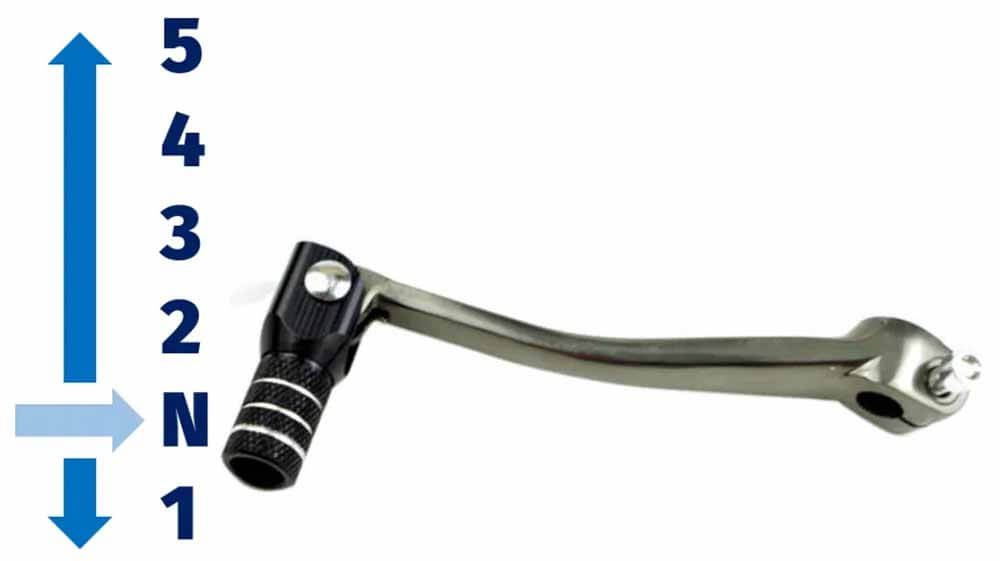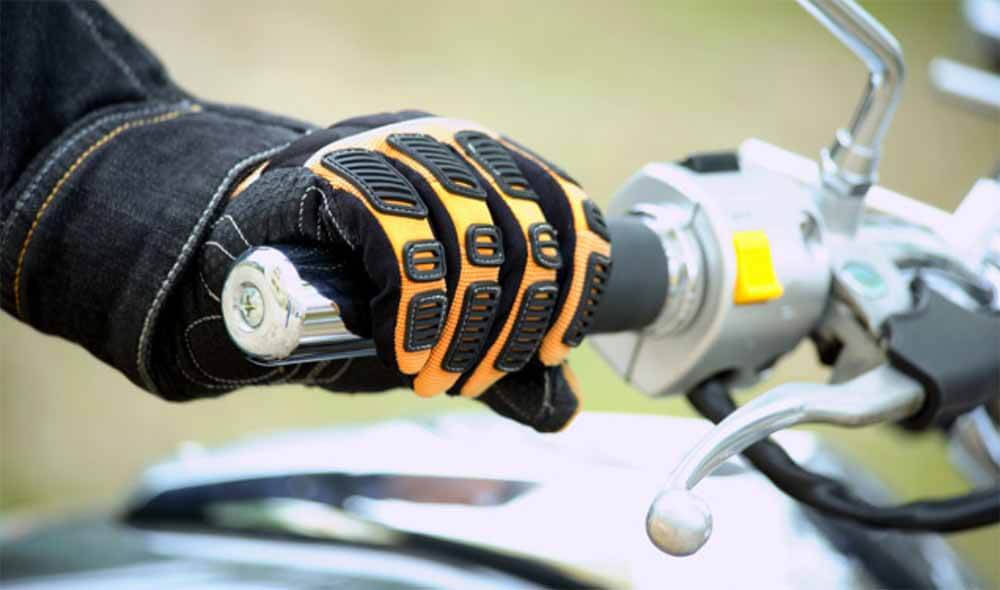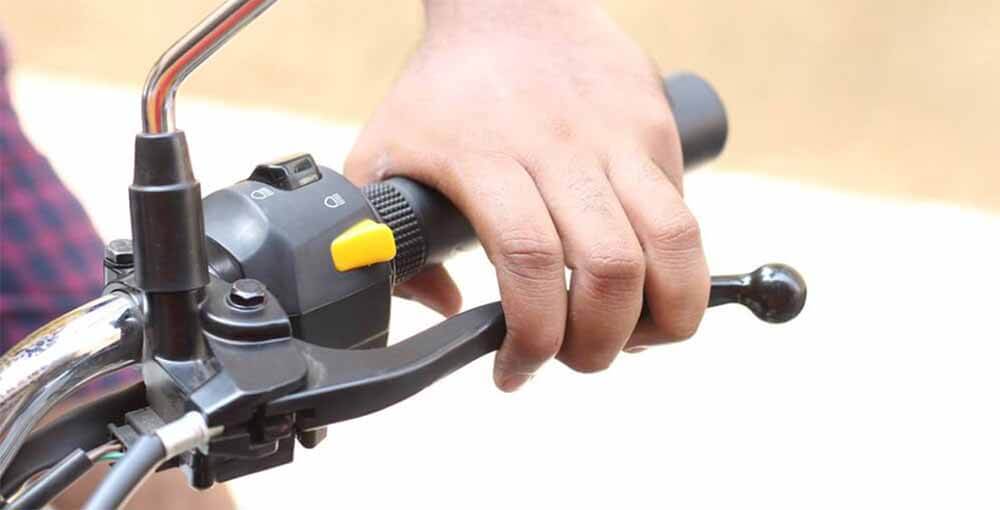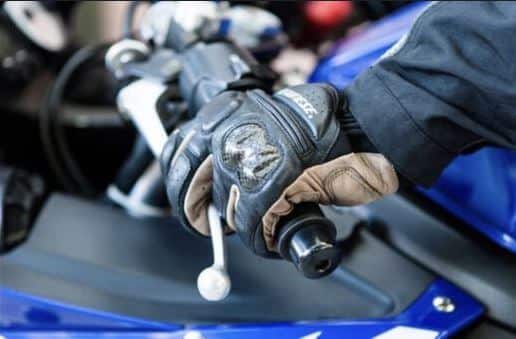Motorcycles have a sequential gearbox, and by definition, you have to drop down a gear or two to make the most out of your bike’s power band at higher RPMs without everything feeling twitchy and gut-wrenching. Simply going fast and taking excessive risks are the hallmarks of a wannabe biker. In contrast, real proficient bikers have fast reaction time but calm and steady hands with exceptionally good mortal control of all limbs to keep everything smooth. But wait, there’s more! Get ready to learn about the technique that has the potential to improve both your bike’s longevity and your own safety.
Downshifting a motorcycle can be done in three ways: First, clutchless shifting entails applying pressure to the gear selector to drop into the lower gear without disengaging the clutch. This can be achieved even on a bike without slipper clutch technology, which makes it safer to do. Shifting clutchless may work better with upshifts but could potentially lock the rear. Second, we have the normal shifting with a clutch operation where you pull in the clutch, select the next gear then smoothly let the clutch out. Third, and perhaps the most important, we have the much-acclaimed “matched rev downshift,” which we will dwell on in this post because it has potential benefits for increasing your bike’s longevity and improving rider safety.
What Is Downshift with Rev Matching?

Rev matching is the act of intentionally increasing engine speed to match the speed of the lower gear when downshifting to create a smooth transition. It is that cool thing pro bikers do that is fun and makes the bikes loud when slowing into a corner or at a stop. Matching revs goes hand in hand with downshifting because it is how a motorcycle was built to function.
Motorcycles are easy to ride on straightway, but trail braking for correct corner entry speed requires proficiency. Now, that’s where rev-matched downshifts come in. You need to reduce speed and at the same time be in lower gears where torque devils live so that you can attack the corner exit aggressively as soon as it is allowable to take away the lean angle. You downshift and engine brakes without rocking the boat. It’s an art!
Two Motorcycle Downshift with Rev Matching Techniques for On and Off-Track Riding
Start by learning how to downshift like pros with these two techniques.
1. Throttle blipping
2. Clutch slipping
For fast riders, rushing corner entry or getting back on throttle too soon, or crossing the centerline or right edge (going wide) spells disaster. Collisions, high sides, and low sides — to name but a few devils — lie in wait to ambush at every corner. Your only weapon against them is composure, which comes from diligent practice.
1. Rev Matching by Throttle Blipping Technique — Clutch In, Down a Gear, Blip & Clutch Out

Although it seems sequential from the annotation, it’s not. Perhaps it is better to think of it like it all happens at once because all actions take place in a split second, and to your brain, they are concurrent.
To rev the match in a downshift, do:
-
- Learn to Cover and Preload Your Levers: Practice covering your front brake and clutch with only one or two fingers (index and/or middle fingers) on either hand while leaving the ring and pinky fingers to encircle the throttle and left handle and practice riding this way.
- Learn to Multitask with Your Right Hand: Once you have mastered braking on two fingers, pull in the clutch and try to roll off the throttle (RH) while maintaining an even and smooth brake pressure with your index and middle finger on the lever.
- Downshift and Rev Match: Reel in the clutch whilst braking lightly on the front then put pressure on the gear selector to go down a gear the normal way.
- Now Comes the Elusive Part: Use your right palm and pinky finger to rev the engine briefly before letting the clutch out to engage the new lower gear all the while applying uniform pressure on the front brake lever with your index and middle finger.
- Congratulations! You just performed your first rev-matched downshift!
Pro Tip: The size of the blip is relative because machines are not the same at all. Usually, within that 0.5 second, you pulled the clutch, and the engine speed might require compensation of 1,000 to 2,000 RPM.
Hurdles to Overcome When Mastering the Blipping Technique
-
- Doing the Routine Sequentially: The steps are not one after the other, but rather overlap within a short time so that you will want to do them as a single action with all your limbs. Breaking it down and overthinking is a common mistake that makes it more difficult to master this technique.
- Revving Too High: Remember you are only trying to compensate for how much your engine has slowed down since you came off throttle. There is no fixed number, but if you are doing it fast enough, you shouldn’t have to add more than 2000 RPM as noted earlier.
- Clenching on the Brakes: This is not a place where you want to use excessive force on the brake lever; hence, the two-finger technique. The pressure applied to the brake lever should be uniform — so that you don’t rev and increase the brake to stop at the same time, which is conflicting information to your bike’s controls. Again, master the engagement point on your brake lever for proper trail braking into a corner. They go hand in hand with downshifting with matched revs!
You May Like: 13 Popular Types of Motorcycle Handlebars: Choosing the Best for Your Riding Mode
2. Rev Matching by Clutch Slipping Method — Clutch In, Shift Down, Find Bite Point & Clutch Out Smoothly
Clutch slipping to rev-match a downshift does not require a slipper clutch configuration on the bike. You can achieve a smooth landing on just about any machine out there given you possess the requisite skill. This method is much easier than blipping but comes at the cost of clutch wearing out faster.
In this method, there is no use of the blip. Instead, slow clutch coupling ensures that the engine catches up with the clutch slowly. Therefore, it couples the engine rotor to the drivetrain smoothly. To use the slipping method, do:
-
- Pull in the clutch
- Downshift normally
- Let the clutch out quickly to the bite point (the friction/engagement zone)
- Smoothly but quickly let the clutch lever all out
- Hooray! Your first clutchless shift
Pro Tip: The trick to master this method is being fast but accurate. You have to find that engagement with laser precision and be able to repeat it without letting the engine speed drop too far or fluffing the change, which will cause instability.
Hurdles You May Encounter When Learning Clutch Slipping
-
- Rapid Clutch Out: This will be very unpleasant and potentially lethal if you are riding at higher speeds. I would recommend practicing below 35 mph and on an empty parking lot (off the streets) to avoid locking up the rear.
- Impatience: Try to learn this in one session and do it swiftly and you will end up on the pavement. False neutrals, wagging tails and general discomfort are guaranteed punishment for those who lack patience.
Which Downshift Rev Matching Technique Is Better? Slipping or Blipping? What About Slipper Clutches?

While the slipping technique makes life easier, it eats away at your clutch plates sooner. Blipping is arguably more fun as it produces an awesome revving sound while giving you better road presence and clutch longevity. On the other hand, slipper clutches eliminate guesswork and make life a whole lot easier for all riders. They may be less engaging for rider experience but certainly cut down on the drama.
Whether your motorcycle comes with a slipper clutch or not, slipping and blipping are still fun ways to enjoy your ride. And no, downshift with rev-matching does not harm your bike in any way.
What Are the Benefits of Rev Match When Downshifting on a Motorcycle?
Let’s get down to it, the reasons you should learn to rev match with accuracy:
1. Keep the bike under control while stopping or cornering
2. Incorporate engine braking, which can be smoother than ABS on some bikes
3. Comfortable riding for drivers and pillion
4. Improve clutch and overall bike longevity (suspension, transmission, chain, chassis)
5. Downshift to safely and quickly corner
Above all, it’s cool to rev match, makes riding worthwhile if your motorcycle sounds as great as it looks.
Why Downshift While Braking? Isn’t it Redundant?
Three situations call for a downshift; to slow down, to get lower gears for a higher torque to climb hills faster, or to attain better acceleration while overtaking. Except for when slowing down, braking is counterproductive. Whichever the case may be, rev-matching ensures engine braking does not occur inadvertently.
When slowing down, you want to add engine braking to make a quicker and smoother stop while getting ready to take off again. It is a safe riding habit that will prepare you to escape being hit by a TikTok driver.
Preloading your brake lever — a feature of both blipping and slipping downshifts — means finding the point of engagement and keeping it there without actually applying the brakes; usually just before the lever clicks and the rear brake light is turned on. It forces braking to be progressive and safer than jerky inputs of panicked braking.
Final Thoughts on Downshifting a Motorcycle with or Without Rev-Matching
It’s really up to you what you want to do with your bike, but there are obvious benefits to learning how to rev a match. And this goes for all manual transmissions.
When done properly, downshifting with rev-matching will actually improve the longevity of your motorcycle. If downshifts are not precise (engine speed mismatched with clutch speed), they cause an unpleasant jerking motion, which destabilizes the bike and could — worst-case scenario — lock the rear tire.
It takes a lot of practice to master rev-matching, but again, what about riding a motorcycle that is easy? Whether it’s for the fun revs or you are thinking about proficient cornering, rev-matching will get you out of sticky situations and add a gist of fun to your everyday riding experience.
Information for this article was partially sourced and researched from the following authoritative government, educational, corporate, and nonprofit organizations:
Periodic Motor Vehicle Inspection Manual for Inspectors of Motorcycles
About the Author:
Michael Parrotte began his illustrious career in the motorcycle industry by importing AGV Helmets into the U.S. market. He then went on to become the Vice President of AGV Helmets America for 25 years, during which time he also consulted for KBC Helmets, Vemar Helmets, Suomy Helmets, Marushin Helmets, KYT Helmets, and Sparx Helmets.
In 1985, he founded AGV Sports Group, Inc. with AGV Helmets in Valenza, Italy. And for over 38 years now, the company has quietly delivered some of the best protective gear for motorcyclists in the world.
Click Here for Michael’s LinkedIn Profile
Click Here for the Complete AGV Helmet & AGVSPORT History
Click Here for All AGV Sports Group Social Media Information

